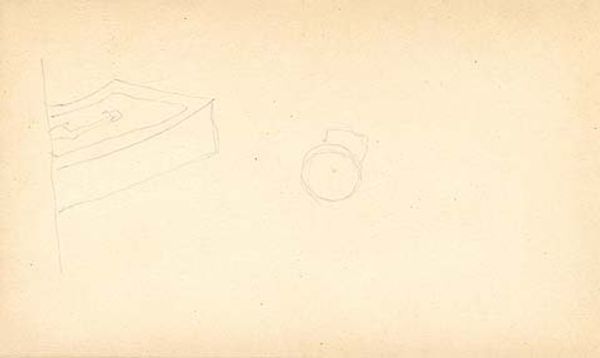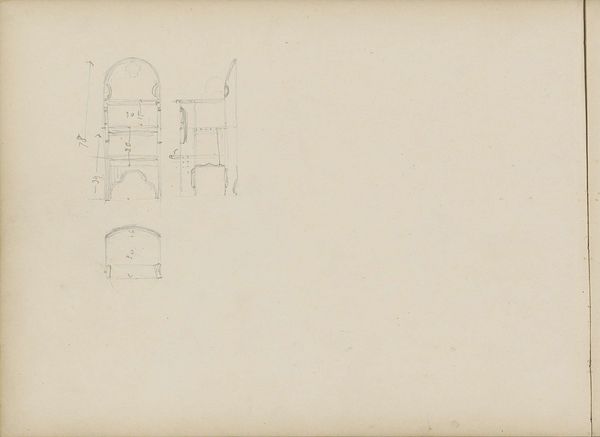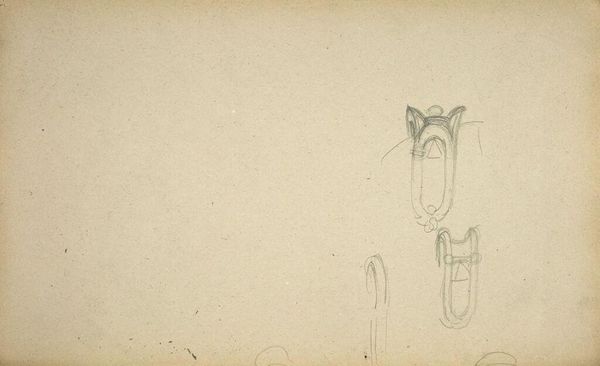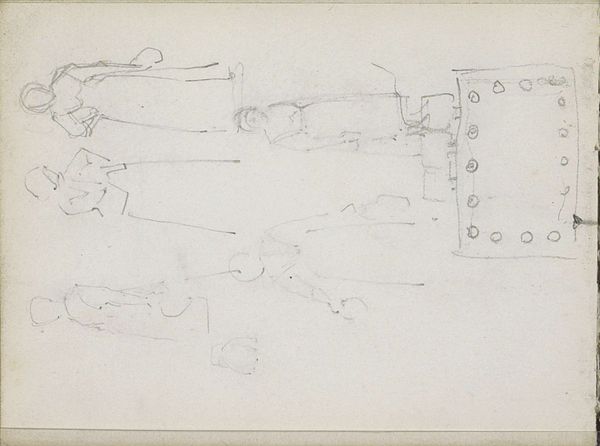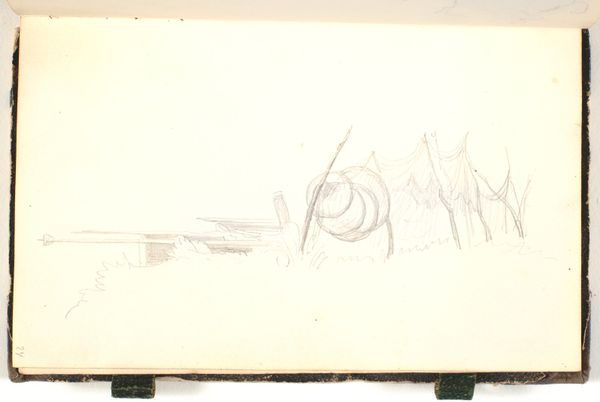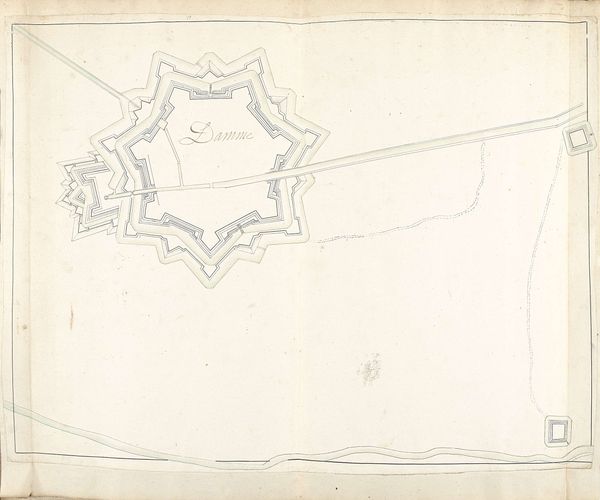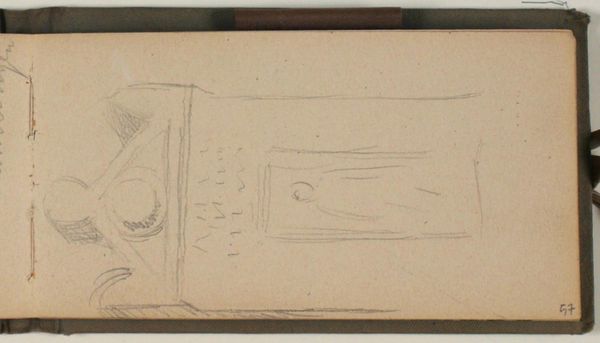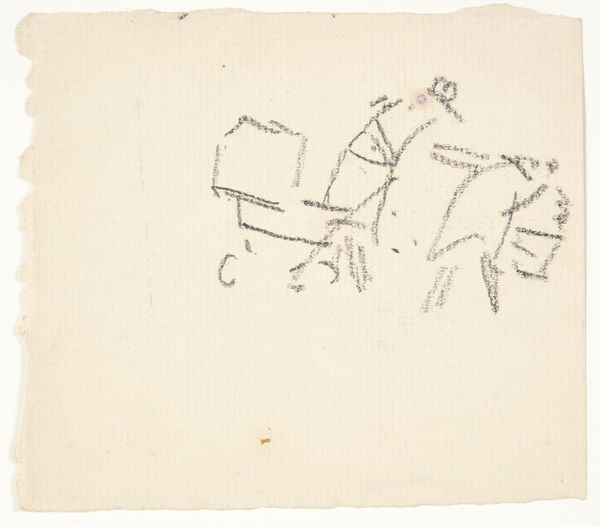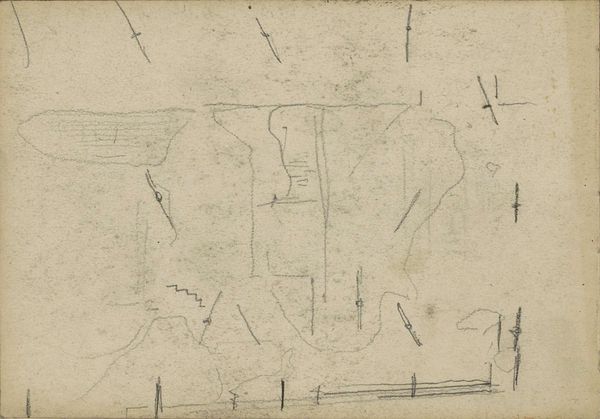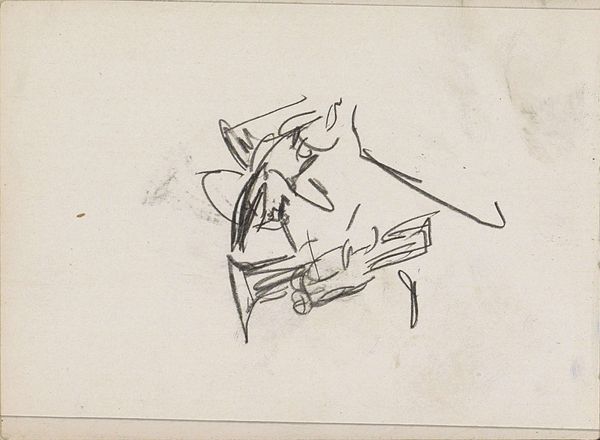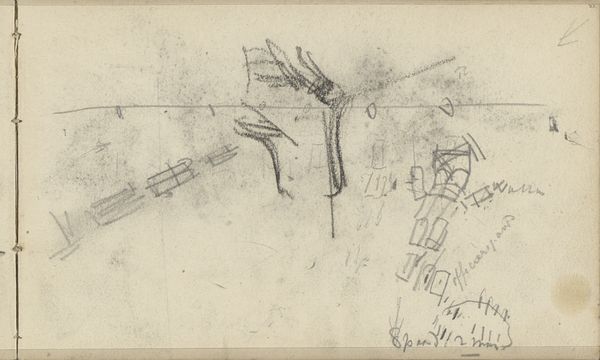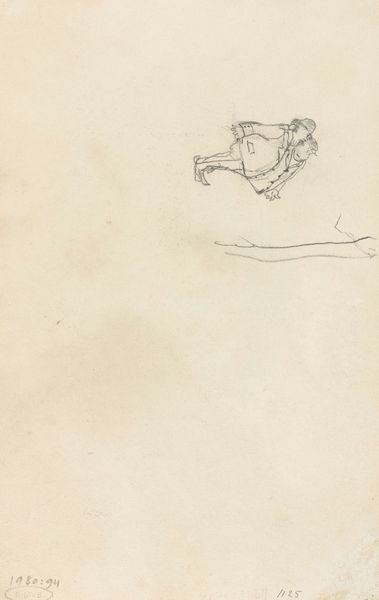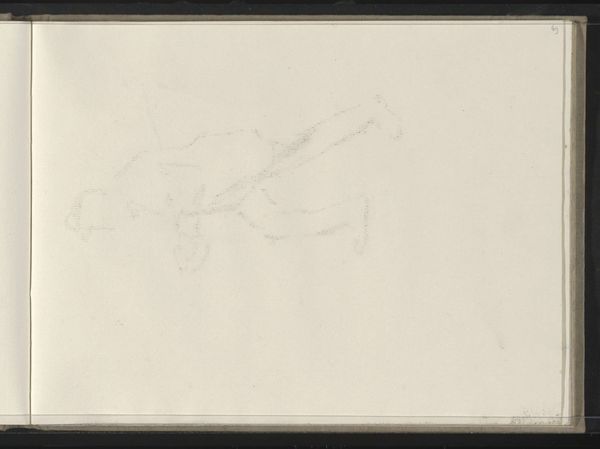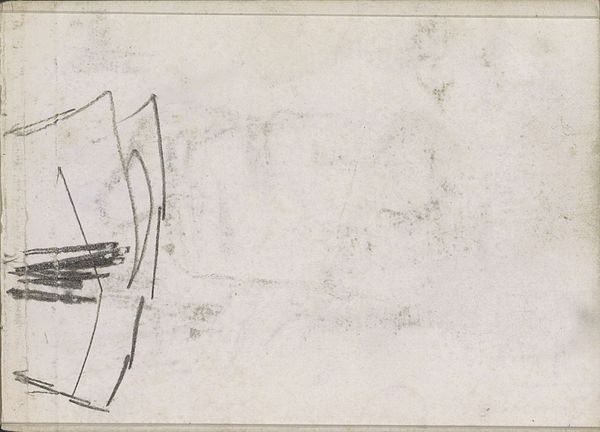
drawing, pencil
#
drawing
#
asian-art
#
figuration
#
geometric
#
sketch
#
pencil
Copyright: Public domain
Editor: We’re looking at Nicholas Roerich’s pencil drawing, "Sketch for 'Tale of Tsar Saltan,'" created in 1919. The light touch of the pencil gives the sketch a dreamy quality, almost like something seen in a half-remembered fairytale. What stands out to you in this work? Curator: Primarily, I'm struck by Roerich's skillful arrangement of form and line. Note the upper cannon, dominated by the intricate detailing of the dragon's head. How the geometrical elements combine, even in a rudimentary sketch, to evoke a cultural object of warfare and mythical symbolism, which contrasts with the simplicity of the second cannon beneath. Do you perceive any tension between the subject matter and the chosen medium? Editor: I do. The delicate lines of the pencil create a contrast with the rather harsh subject matter. The dragon-headed cannon is wonderfully intricate, though, almost playful. Do you think the medium downplays the militaristic function implied? Curator: Precisely. Consider the texture, the bareness of the paper itself; there's an intentional incompleteness that shifts our attention. The emphasis moves away from pure representation to an appreciation of line and composition itself. Do you notice how the organic dragon form relates to geometric abstraction throughout the composition? Editor: It’s fascinating how Roerich balances those elements. Seeing them side-by-side emphasizes both forms. Curator: Yes, a simple form with just pencil is effective at presenting its intrinsic qualities, the visual construction of a cannon and the associated folklore. Editor: I hadn't considered how closely form and symbolism can be connected. This has highlighted the way artists make representational choices and how those choices impact interpretation.
Comments
No comments
Be the first to comment and join the conversation on the ultimate creative platform.
